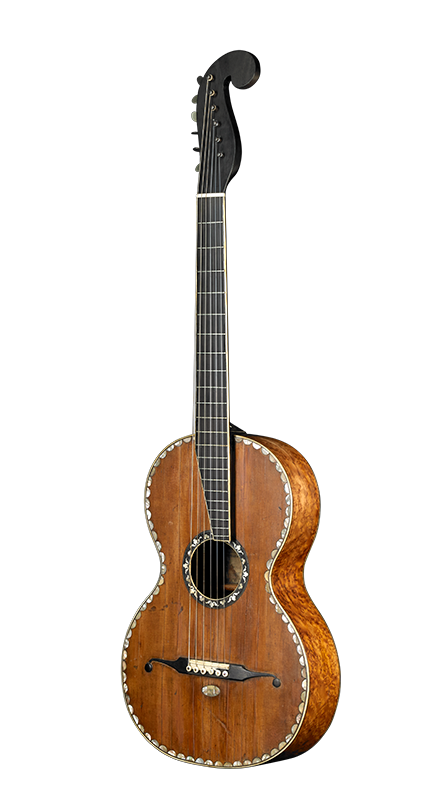
The history of the guitar in the Americas has roots in the mid-sixteenth century and the early days of Spanish and French colonialism. It also encompasses the vihuela, a very close relative of the guitar, as well as the four-course Renaissance guitar followed by the five-course Baroque instrument.
The “English guittar,” a plucked instrument resembling a Renaissance-era cittern and strung with wire, gained wide popularity in the United States during the second half of the eighteenth century. Benjamin Franklin and Thomas Jefferson were among the luminaries who owned an English guittar.
The six-string guitar first appeared in the Americas in the late eighteenth century and, as in Europe, went on to became hugely popular. Many European exporters and makers, seeking to tap the burgeoning American market and to escape the restrictions imposed by craft guilds, benefitted from the introduction of the steamship for transatlantic travel. They were able to build guitars without interference and restrictions, fostering innovation and design.
Click on any of the guitars below to view details about the instrument and its history,
including biographical and performance videos.
Click on any of the guitars below to view details about the instrument and its history, including biographical and performance videos.